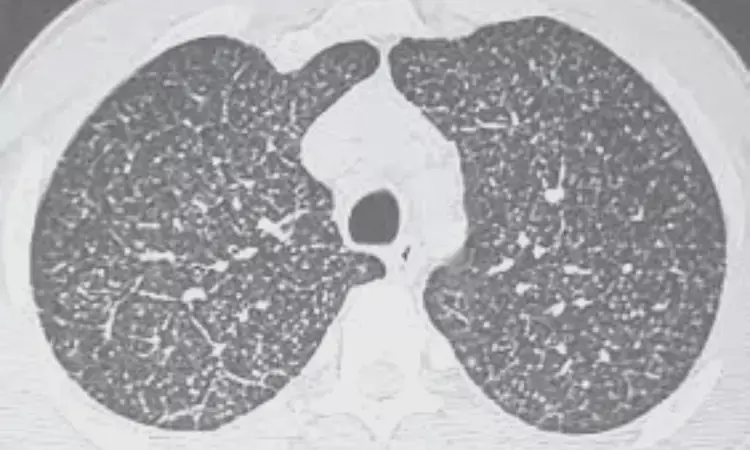- Home
- Medical news & Guidelines
- Anesthesiology
- Cardiology and CTVS
- Critical Care
- Dentistry
- Dermatology
- Diabetes and Endocrinology
- ENT
- Gastroenterology
- Medicine
- Nephrology
- Neurology
- Obstretics-Gynaecology
- Oncology
- Ophthalmology
- Orthopaedics
- Pediatrics-Neonatology
- Psychiatry
- Pulmonology
- Radiology
- Surgery
- Urology
- Laboratory Medicine
- Diet
- Nursing
- Paramedical
- Physiotherapy
- Health news
- Fact Check
- Bone Health Fact Check
- Brain Health Fact Check
- Cancer Related Fact Check
- Child Care Fact Check
- Dental and oral health fact check
- Diabetes and metabolic health fact check
- Diet and Nutrition Fact Check
- Eye and ENT Care Fact Check
- Fitness fact check
- Gut health fact check
- Heart health fact check
- Kidney health fact check
- Medical education fact check
- Men's health fact check
- Respiratory fact check
- Skin and hair care fact check
- Vaccine and Immunization fact check
- Women's health fact check
- AYUSH
- State News
- Andaman and Nicobar Islands
- Andhra Pradesh
- Arunachal Pradesh
- Assam
- Bihar
- Chandigarh
- Chattisgarh
- Dadra and Nagar Haveli
- Daman and Diu
- Delhi
- Goa
- Gujarat
- Haryana
- Himachal Pradesh
- Jammu & Kashmir
- Jharkhand
- Karnataka
- Kerala
- Ladakh
- Lakshadweep
- Madhya Pradesh
- Maharashtra
- Manipur
- Meghalaya
- Mizoram
- Nagaland
- Odisha
- Puducherry
- Punjab
- Rajasthan
- Sikkim
- Tamil Nadu
- Telangana
- Tripura
- Uttar Pradesh
- Uttrakhand
- West Bengal
- Medical Education
- Industry
DECT better for evaluating oncologic lesions compared to PCT

Comparable results are obtained by dual-energy computed tomography (DECT) and perfusion computed tomography when evaluating the angiogenesis of lesions emerging from solitary lung nodules, says an article published in Scientific Reports.
Around 13% (1.8 million) of the 14 million malignant tumors reported globally in 2012 were lung malignancies. The number of patients receiving a surgical excision of the tumor increases with the use of modern multimodal treatment plans that incorporate induction chemotherapy or radiation. Perfusion computed tomography (CTP) is a dynamic test that allows for in-vivo evaluation of the tumor's vitality and degree of vascularization, which has an impact on diagnosis, staging evaluation, prognosis, and monitoring of the response to anti-angiogenic therapy. In this work, Arkadiusz Zegado and colleagues looked at the viability of employing a single DECT scan in place of high-dose CTP to measure the angiogenesis of solid lung lesions.
28 solitary pulmonary nodule (SPN) patients participated in this prospective trial and received DECT and perfusion computed tomography in accordance with a confidential procedure. Four perfusion parameters—blood flow (BF), blood volume (BV), time to maximum of tissue residue function (Tmax), iodine concentration (IC), permeability surface area product (PS) from CTP, and normalized iodine concentration (NIC) of the SPN from DECT—were examined independently by two radiologists.
The key finding of this study were:
1. The typical tumor was 23.5 mm by 6.5 mm.
2. In contrast to IC and PS, which had weak correlations, there were positive correlations between IC and BF, NIC and BF, IC and BV, and NIC and BV.
3. NIC and PS, IC content and Tmax, and NIC and Tmax did not correlate with one another. At CTP (ICCPS = 0.97, ICCTmax = 0.96, ICCBV = 0.98, and ICCBF = 0.99) and DECT (ICCIC = 0.98) there was strong inter-reader agreement on quantitative parameters.
4. When compared to CTP, the radiation dosage in DECT was much lower (4.84 mSv vs. 9.07 mSv, respectively).
Reference:
Zegadło, A., Różyk, A., Żabicka, M., Więsik–Szewczyk, E., & Maliborski, A. (2023). Dual-energy computed tomography as a lower radiation dose alternative to perfusion computed tomography in tumor viability assessment. In Scientific Reports (Vol. 13, Issue 1). Springer Science and Business Media LLC. https://doi.org/10.1038/s41598-022-27221-8
Neuroscience Masters graduate
Jacinthlyn Sylvia, a Neuroscience Master's graduate from Chennai has worked extensively in deciphering the neurobiology of cognition and motor control in aging. She also has spread-out exposure to Neurosurgery from her Bachelor’s. She is currently involved in active Neuro-Oncology research. She is an upcoming neuroscientist with a fiery passion for writing. Her news cover at Medical Dialogues feature recent discoveries and updates from the healthcare and biomedical research fields. She can be reached at editorial@medicaldialogues.in
Dr Kamal Kant Kohli-MBBS, DTCD- a chest specialist with more than 30 years of practice and a flair for writing clinical articles, Dr Kamal Kant Kohli joined Medical Dialogues as a Chief Editor of Medical News. Besides writing articles, as an editor, he proofreads and verifies all the medical content published on Medical Dialogues including those coming from journals, studies,medical conferences,guidelines etc. Email: drkohli@medicaldialogues.in. Contact no. 011-43720751


